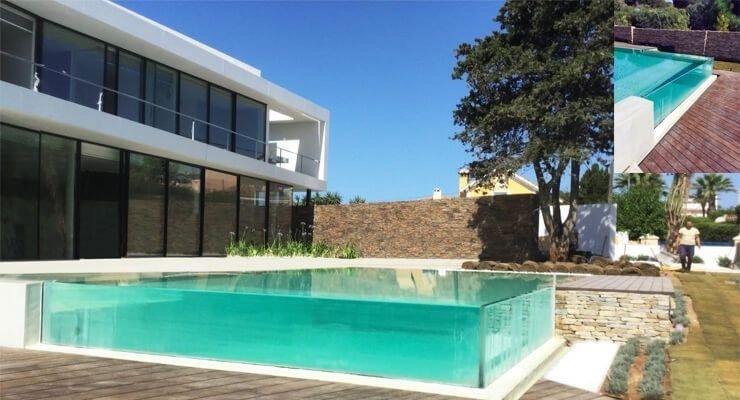Why do Transparent Swimming Pools use Acrylic Materials?
This article will enable you to realize why acrylic materials are used in transparent swimming pools, read this article to learn more about why we use acrylic materials for aquarium and swimming pools projects.
Acrylic plexiglass is polymerized from methyl methacrylate monomer (MMA), i.e. polymethylmethacrylate (PMMA) plate plexiglass. It is a kind of plexiglass processed by a special process, which has the reputation of “plastic Queen” and “plastic crystal”, and has high transparency, with a transmittance of 92%. The physical properties of acrylic determine that the base is the better choice for transparent swimming pool materials. Compared with inorganic mineral glass, acrylic organic glass with the same thickness has 16 times impact resistance. Research and development of acrylic have a history of more than one hundred years. It is mainly used in large-scale aquarium, large-scale aquarium, Cylindrical Aquarium, endless swimming pool, aquarium project, etc. It has excellent weather resistance, especially for outdoor application, ranking the top of other plastics, and has good surface hardness and luster, processing plasticity, and can be made into various shapes and products. It is a thick plate that can still maintain superior transparency.
I. characteristics of blue lake acrylic
1. Colorless and transparent plexiglass plate with light transmittance over 92%;
2. The adaptability of the natural environment is very strong. Even long-time exposure to sunlight and wind and rain will not change its performance. It has good aging resistance and can be used safely outside.
3. Good processing performance, suitable for both machining and thermoforming;
4. Nontoxic, even in long-term contact with people. However, formaldehyde and carbon monoxide will be produced during combustion
5. Strong impact resistance, 16 times the same thickness of glass. Suitable for installation in the area with a special need for safety;
6. Excellent insulation performance, suitable for all kinds of electrical equipment;
7. The weight is light. The density is half lighter than ordinary glass, and the load borne by buildings and supports is small
8. It has strong plasticity, the big change in modeling and easy processing and molding;
9. The high recovery rate is recognized by the growing awareness of environmental protection;
10. It is not difficult to maintain and clean. Rainwater can be cleaned naturally or scrubbed with soap and a soft cloth.
Because of the difficulty and high cost of acrylic production, there are numerous low-cost substitutes in the market. These substitutes, otherwise known as “acrylic”, are actually ordinary organic boards or composite boards (also known as sandwich boards). The ordinary organic board is made of ordinary organic glass cracking material and pigment, with a surface hardness.
Check out our ARTICLE on, Comparison of Glass and Acrylic Aquariums, and like our Facebook page to get connected with us.


